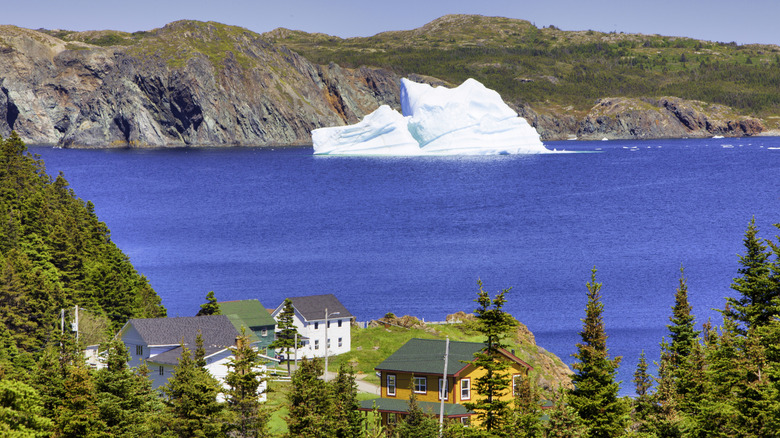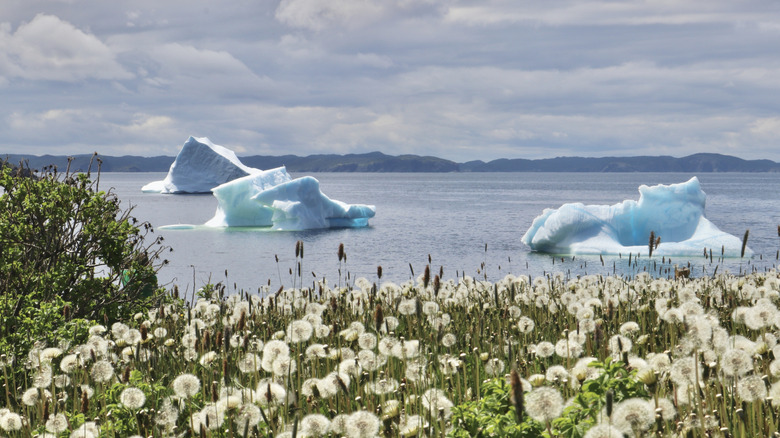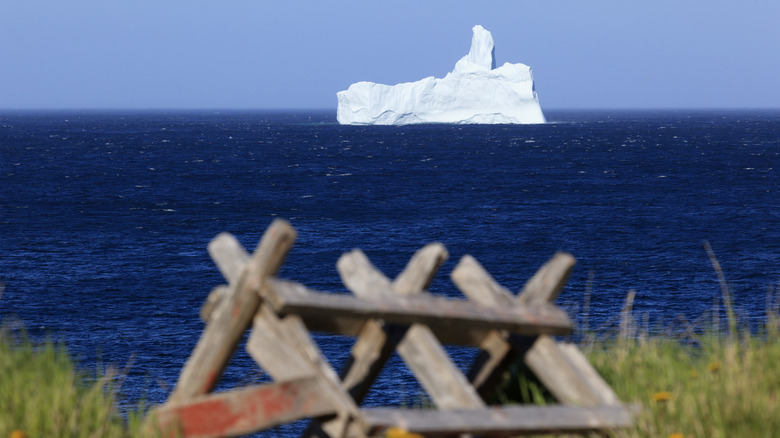When you think of icebergs, you probably think of Antarctica, Alaska, or the notorious ‘berg that sank the ill-fated Titanic. However, one of the best places in the world to spot icebergs may surprise you: Canada. Yep, not only does Canada unexpectedly have the longest coastline in the world (along with remarkable beaches), it also has the famous Iceberg Alley.
Iceberg Alley is located off the coast of Newfoundland and Labrador, a maritime province on the eastern coast of Canada. The regular, seasonal arrival of these giant chunks of ice, originating from glaciers in Greenland or northern Canada, has given this 621-mile (1,000 km) stretch of coastline the distinctive moniker, attracting iceberg-hunting tourists every year to this remote corner. Iceberg Alley covers the southern tip of Labrador down to the southeast coast of the island of Newfoundland, where the icebergs migrate towards the open ocean. As one local points out, this is the icebergs’ final act, “their ‘swan song,’ where they will ultimately melt off Newfoundland’s shores” (via natgeo.com). The fleeting and unpredictable nature makes these incredible ice sculptures all the more captivating. The many charming villages along the coastline add to the attraction of Iceberg Alley, providing a cozy place to land. No two icebergs are the same, although many of them have the same source, calved from glaciers that are potentially thousands of years old. They also come in all shapes and sizes, some as tall as mountains, and in stunning shades of white and blue.
However, although the number of icebergs varies widely each year, the overall trend over the past five years has seen a decline in the number of ‘bergs passing through Iceberg Alley. So, if this magnificent sight is on your bucket list (and it should be!), the sooner you get there the better.
Iceberg Alley off the coast of Newfoundland
Newfoundland, part of the eponymous province that includes Labrador, is one of Canada’s premier islands with rustic stays, world-class food, and natural beauty. Iceberg Alley and its environs is one of the most incredible sights on this already beautiful island. The iceberg “season” is generally late spring and early summer, with May and June considered the prime iceberg viewing months – although they’ve been spotted both in April and July. To see the icebergs from the shore, towns like St. Anthony, Twillingate, Witless Bay, Bonavista, and St. John’s are all easily accessible and have their fair share of small-town charm. To reach Newfoundland, take a car ferry from Nova Scotia and Labrador, or fly into the biggest airport in the town of St. John’s.
To get up and close (or, as close as safety allows), take a designated boat tour or a kayak out on the open sea. Note that icebergs can be dangerous and unpredictable (as we all know, over 90% of the iceberg is underwater, meaning it isn’t all visible), so joining a qualified tour guide is the best way to see icebergs from the water. Icebergs can also appear (and disappear) quickly, so check out Iceberg Finder before you head to Canada.
Besides their ephemeral beauty, there are other perks to the icebergs. Pure iceberg water is popular near Iceberg Alley, in Berg water, Iceberg spirits like vodka, and even Iceberg Beer. Another extra benefit of Iceberg Alley? The wildlife! As these slowly melting ‘bergs leave sediment from their home glacier in their wake, a huge variety of marine life is attracted to the area. Both whales and various bird species happen to be migrating north as the icebergs sail south, and if you’re lucky, you’ll spot the trifecta all at once.




